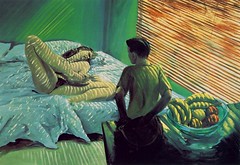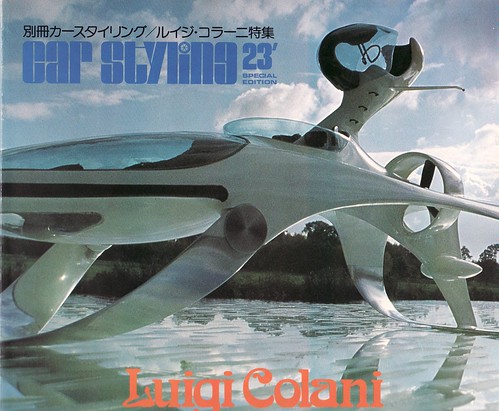Bad Boy (1981) by Eric Fischl
Today is Icon of Erotic Art #33 day. Remember this series is handmade, I’m not pulling this out of a list. So it was with great pleasure that I was reminded Eric Fischl‘s Bad Boy painting[1].
Bad Boy (1981) depicts a young boy looking at and older woman shown in a provocative masturbatory (a beaver shot to be precise) pose on a bed, while the subject is surreptitiously slipping his hand into the woman’s purse and presumedly stealing its contents.
The painting unites eroticism and crime, between the two is a very strong link first explored by Sade and verbally juxtaposed by Jules Amédée Barbey d’Aurevilly in Happiness in Crime, a short story first published in the 1874 collection Les Diaboliques. I hope to explore this connection later.
Bad Boy is a painting which provokes the imagination, an equal amount of events seem to be in the painting as outside of it.
I imagine the neighborhood outside the room depicted suburbian. I imagine her husband (she is married and sexually neglected) watering the garden in a David Hockney painting manner. Maybe her husband is taking a A Bigger Splash[2] in their pool. Or the same husband is entertaining his gay lover in Portrait of an Artist (Pool with Two Figures)[3].
Since all figurative painting involving the human figure is narrative painting a number of questions can be raised:
What is the relationship between the older woman and the boy? Is he her son? Or is she barren? Is he a neighborhood boy who entered her house without her knowing? Is the woman aware that she is being stolen from and spied upon at the same time? Is it a game they play regularly and is the boy rewarded the money afterwards? Who is to tell?






